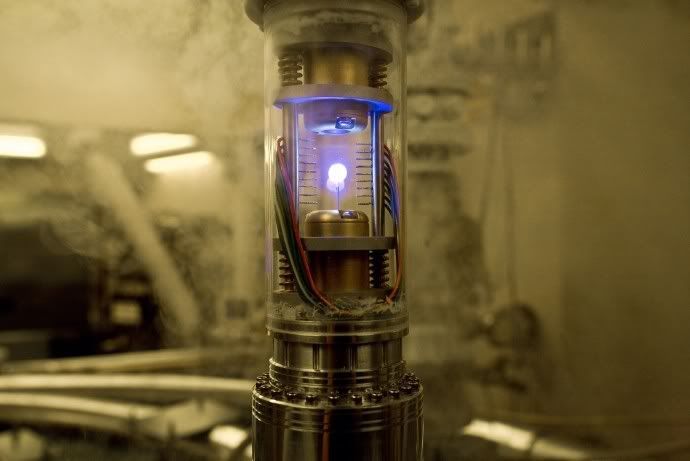
With conventional technologies nuclear explosives can scale down to about 1/100 kiloton (10 tons, 42 GJ; W54), but making them smaller seems difficult. Large nuclear explosive charges require a heavy structure for the spacecraft, and a very large (and heavy) pusher-plate assembly. Small nuclear explosives are believed to stop shrinking in overall size and required fissile nuclear materials at around 25 kilograms weight, so smaller pulse units are much more expensive per delivered unit energy, and much less mass efficient than larger ones. By injecting a small amount of antimatter into a subcritical mass of fuel (typically plutonium or uranium) fission of the fuel can be forced. An anti-proton has a negative electric charge just like an electron, and can be captured in a similar way by a positively charged atomic nucleus. The initial configuration, however, is not stable and radiates energy as gamma rays. As a consequence, the anti-proton moves closer and closer to the nucleus until they eventually touch, at which point the anti-proton and a proton are both annihilated. This reaction releases a tremendous amount of energy, of which some is released as gamma rays and some is transferred as kinetic energy to the nucleus, causing it to explode. The resulting shower of neutrons can cause the surrounding fuel to undergo rapid fission or even nuclear fusion.
No comments:
Post a Comment